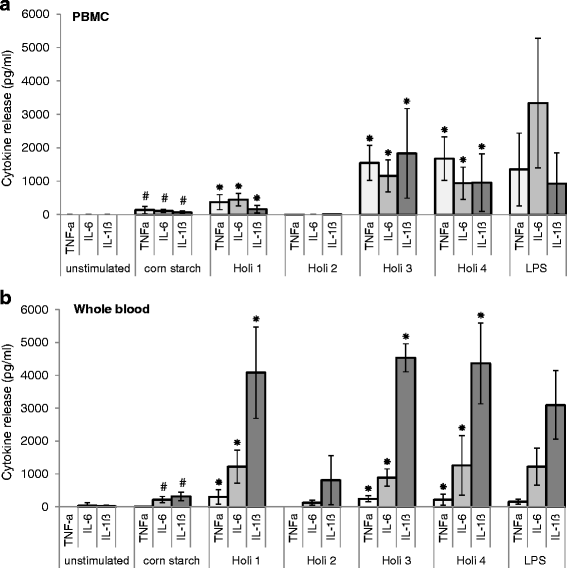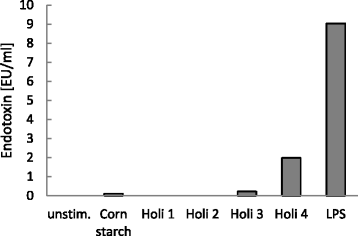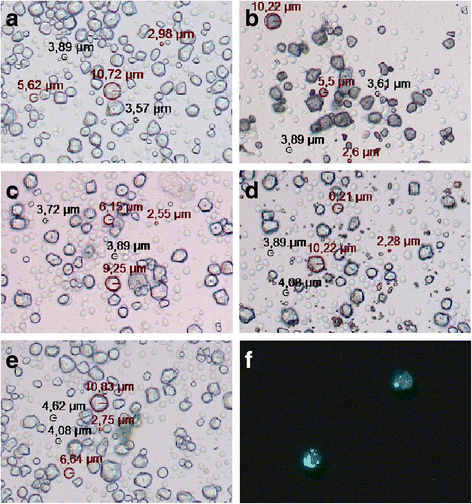Holi colours contain PM10 and can induce pro-inflammatory responses
- PMID: 27617025
- PMCID: PMC5018189
- DOI: 10.1186/s12995-016-0130-9
Holi colours contain PM10 and can induce pro-inflammatory responses
Abstract
Background: At Holi festivals, originally celebrated in India but more recently all over the world, people throw coloured powder (Holi powder, Holi colour, Gulal powder) at each other. Adverse health effects, i.e. skin and ocular irritations as well as respiratory problems may be the consequences. The aim of this study was to uncover some of the underlying mechanisms.
Methods: We analysed four different Holi colours regarding particle size using an Electric field cell counting system. In addition, we incubated native human cells with different Holi colours and determined their potential to induce a pro-inflammatory response by quantifying the resulting cytokine production by means of ELISA (Enzyme Linked Immunosorbent Assay) and the resulting leukocyte oxidative burst by flow cytometric analysis. Moreover, we performed the XTT (2,3-Bis-(2-methoxy-4-nitro-5-sulfophenyl)-2H-tetrazolium-5-carboxanilide) and Propidium iodide cytotoxicity tests and we measured the endotoxin content of the Holi colour samples by means of the Limulus Amebocyte Lysate test (LAL test).
Results: We show here that all tested Holi colours consist to more than 40 % of particles with an aerodynamic diameter smaller than 10 μm, so called PM10 particles (PM, particulate matter). Two of the analysed Holi powders contained even more than 75 % of PM10 particles. Furthermore we demonstrate in cell culture experiments that Holi colours can induce the production of the pro-inflammatory cytokines TNF-α (Tumor necrosis factor-α), IL-6 (Interleukine-6) and IL-1β (Interleukine-1β). Three out of the four analysed colours induced a significantly higher cytokine response in human PBMCs (Peripheral Blood Mononuclear Cells) and whole blood than corn starch, which is often used as carrier substance for Holi colours. Moreover we show that corn starch and two Holi colours contain endotoxin and that certain Holi colours display concentration dependent cytotoxic effects in higher concentration. Furthermore we reveal that in principle Holi colours and corn starch are able to generate an oxidative burst in human granulocytes and monocytes. In Holi colour 1 we detected a fungal contamination.
Conclusions: Some of the observed unwanted health effects of Holi colours might be explained by the high content of PM10 particles in conjunction with the possible induction of a pro-inflammatory response and an oxidative leukocyte burst.
Keywords: Holi colours; IL-1β; IL-6; Oxidative burst; PM10; Pro-inflammatory response; TNF-α.
Figures






References
LinkOut - more resources
Full Text Sources
Other Literature Sources
Miscellaneous

